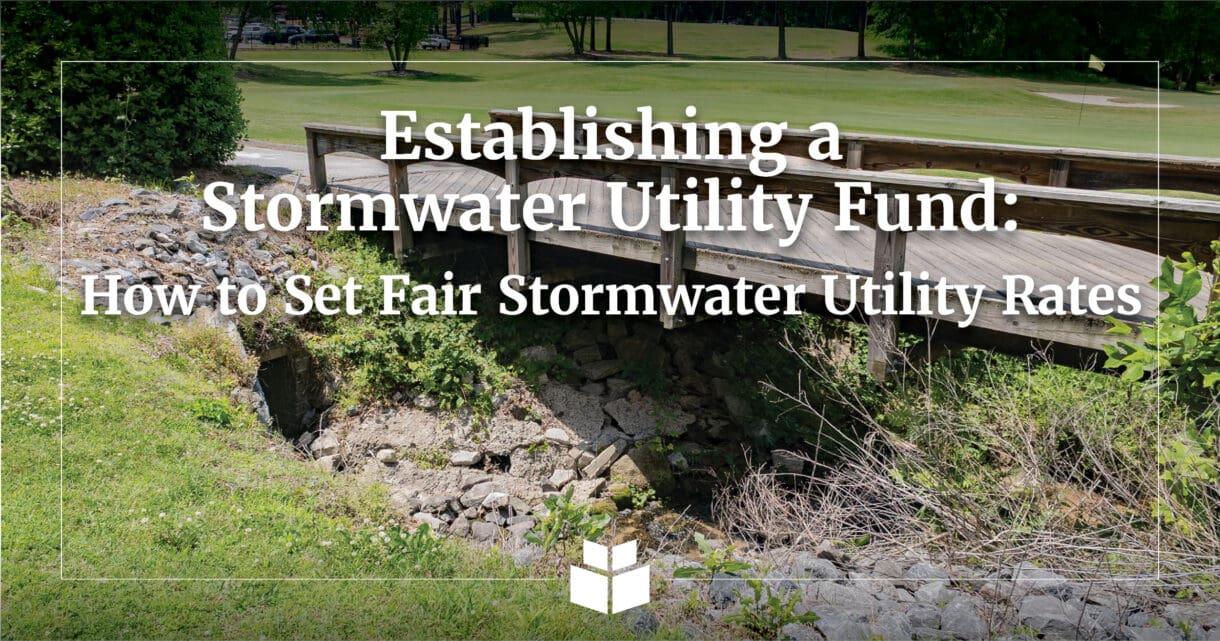
Charging a new user fee for a service that had previously been managed behind the scenes is never going to be a popular change. But increasingly, local governments and citizens are recognizing that managing stormwater comes at a significant cost. To avoid competing for these services from other desirable departments like parks and recreation or transit, local governments can establish a stormwater utility to collect a fee to offset the cost of managing stormwater operations, maintenance, capital improvements. WithersRavenel takes the sting out of introducing a new fee by explaining how to set appropriate and fair stormwater utility rates to achieve your financial goals.
Phase 1: Conduct an Impervious Area Analysis
During the impervious area analysis phase, the goal is to determine the total amount of impervious surface area and, specifically, the amount of impervious surface located in residential, non-residential, and non-billable parcels. This phase consists of three steps:
Step 1: Analyze Impervious Area Data
Gather existing data necessary to create an impervious area dataset. Determine the current status of all data sources, including accuracy and completeness. Review datasets for parcels, land use, planimetries, streets, sidewalks, greenways, and the most recent orthophotography within the jurisdiction’s limits. If possible, utilize other imagery sources, such as leaf-off imagery or spectral imagery, to refine the pervious or impervious classification obtained using readily available information.
Step 2: Calculate Impervious Surface Area for Parcels
Overlay the results from steps 1 and 2 on a parcel map to calculate the amount of impervious surface located in residential, non-residential, and non-billable parcels.
Step 3: Calculate a recommended ERU
Because residential parcels can vary widely in the amount of impervious area they contain, an ERU (Equivalent Residential Unit) is used to quantify the amount of impervious area in the “average” residential parcel. Decide whether an ERU represents the mean, median, or mode of the impervious area of a group of residential parcels.
Phase 2: Stormwater Fee Structure Evaluation
During the stormwater fee structure evaluation phase, the goal is to set user fees with respect to desired level of service, fairness among different user types, and long-term financial sustainability. This phase consists of four steps:
Step 1: Create or update the Capital Improvement Plan (CIP)
Review the community’s CIP to understand proposed projects, financial assumptions, and prioritization schedule. If no CIP exists, develop preliminary stormwater project scopes and rough costs for a 10-year time frame, factoring in annual MS4 compliance if needed.
Step 2: Develop an operating budget
Based on the identified stormwater objectives and policy parameters, determine the appropriate level of stormwater service. Estimate the costs for the kinds of activities associated with that service, such as staffing and administrative costs.
Step 3: Develop a financial analysis model
Project fund revenues from operating and non-operating sources related to the proposed stormwater utility, including revenues from an assumed stormwater user fee structure, for a 10-year time period. Factor in exceptional or non-reoccurring events that are planned or anticipated which would influence financial trends or conclusions during the 10-year forecasting period. Establish annual estimates of new revenue requirements necessary to sustain the stormwater utility over the 10-year period.
Step 4: Develop a stormwater utility fee model
Develop a stormwater utility fee model that will provide reliable revenues from fees for annual fiscal cycles. Provide the information necessary to conduct fee benchmarking for other North Carolina municipal Stormwater management programs.
Phase 3: Iterate
Like any budgeting or planning exercise, setting stormwater utility fees is not a one-and-done activity. As communities grow and develop, they need to account for a changing physical and financial landscape. New real estate developments bring new stormwater infrastructure that must be maintained. Aging infrastructure must be repaired or replaced. Changes in the frequency and severity of wet weather events may demand shifts in disaster response and recovery strategy.
Local governments should plan to periodically review their stormwater utility rates and adjust them as their priorities change. WithersRavenel recommends conducting a stormwater utility fee review once a year, but no less frequently than every five years.
Final Thoughts
It is not financially sustainable to continue constructing grey and green infrastructure and performing routine stormwater maintenance without offsetting the cost. Establishing a stormwater utility creates a fair and reliable mechanism to pay for a community’s stormwater management needs. WithersRavenel combines in-house expertise in GIS data collection, stormwater management, and financial consulting to develop stormwater utility rates that fulfill both operational and financial goals.


